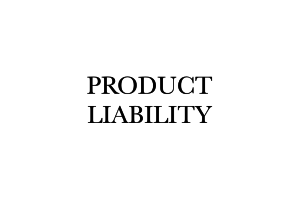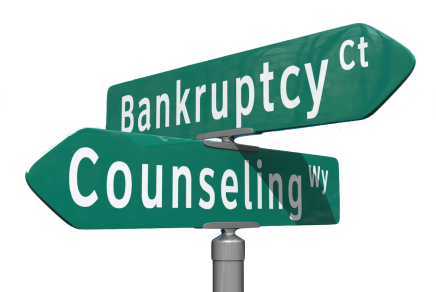Notes on EU Directive 2464/22 (CSRD)
-
What is “sustainability”? When referred to an economic activity, it means the ability to balance-
(a) the business’ own needs to generate short-term profit, with
(b) the public, and longer-term interest to assure the quality of the physical and social environment.
Sustainability -originally conceived from the perspective of environmental protection (i.e., protection of the ecosystem, and wise exploitation of natural resources)- has now expanded to include the economic, and social sides. Since contemporary economic activity is based on the paradigm of continuous development (to avoid stagnation and regression), development and sustainability must necessarily be reconciled. Hence, the concept of “sustainable development” identified as that which “meets the needs of the present generation without compromising the ability of future generations to meet their own needs.” The EU developed its own “Sustainable Development Strategy” in 2011. A UN “Agenda 2030 for Sustainable Development” was also adopted in 2015, and the EU then launched its bet to make Europe a “climate neutral” continent by 2050 (c. d. Green Deal project). We do not know whether this will be possible, but today the idea of sustainable development offers for sure an appreciable perspective, and a set of values on which to build meaning for what we do. Over time, technological progress will probably make adjustments, if not radical changes to the program. However, there is little doubt that the development of strategies aimed ultimately at the survival of the species is a need that cannot be procrastinated. An acronym that is becoming more and more popular, coined indeed years ago, is ESG – Environmental, Social, Governance – meaning attention to (i) environmental protection, (ii) respect for human and social rights, and (iii) transparency in corporate governance and administration[1].
-
What do businesses have to do with it? In their quality of major players in economic development, businesses (both public and private) are directly involved in this process and are called upon to reconsider how they operate, so that they align with principles of sustainability. This happens either (a) as a result of impositions of authority or (ii) (in unregulated areas) spontaneously. Failure to do so exposes companies in the former case to penalties or business stoppage; in the latter case, to likely social and market stigma.
The European legislator’s focus for now rests on “large” companies and groups. Therefore, “small” and medium-sized” companies (SMEs) remain outside the perimeter except for those that are listed-and not even these where they have size define themselves as “micro.” The parameters for defining the size of companies are set in the EU usually by way of directives (thus leaving some leeway for Member States in transposition)[2].
-
What are the landmark regulations? Noteworthy are two directives from 2013 and 2014[3] that required the Member States to put in place an obligation for larger companies and business groups (with at least 500 employees), to supplement their financial statement information with non-financial information pertaining to the state of affairs and the programs adopted on:
-
Environmental protection (including the use of energy resources, emissions, …)
-
Social responsibility
-
Treatment of employees
-
Respect for human rights
-
Combating active and passive corruption
-
Diversity and inclusion
From there, it was a short step to the adoption – as part of the aforementioned European Green Deal – in December 2022 of the so-called CSRD directive – which stands for Corporate Sustainability Reporting Directive[4].
The CSRD extended the number of companies subject to mandatory reporting. From the financial year 2024 on[5], due information on the items listed above must comply with certain newly minted EU standards[6], be included in the Report accompanying the financial statements, and be certified by accredited external third parties (for now, statutory auditors).
Thus, today we have to speak of Corporate Sustainability Reporting, and no longer of Non-Financial Reporting. In essence, it is required that companies account for both (a) how their business impacts the social fabric and the environment, and (b) how social and environmental issues impact, in terms of risks and opportunities, on the company itself (the principle of so-called “double materiality”).
The Member States are expected to implement the CSRD within weeks (July 6, 2024).
-
What does social reporting on sustainability consist of? As mentioned above, it is a part of the report accompanying the annual corporate report.
The information should cover the three ESG areas (environmental, social, corporate). The EU is preparing standards to ensure uniformity in the presentation of the information. In essence, however, it will be a matter of stating:
-
the company’s model and strategy on resilience to risks related to sustainability issues;
-
the objectives that the company aims to achieve (including those of reducing greenhouse effect-relevant emissions);
-
the role of corporate boards in managing sustainability issues;
-
any sustainability-related incentives;
-
due diligence procedures adopted, again on sustainability issues;
-
main actual or potential negative impacts related to the company’s activities as well as any actions taken to prevent or mitigate them and their results;
-
main risks to the enterprise related to sustainability issues;
-
relevant indicators for reporting.
For SMEs, a less detailed report is envisaged, which nonetheless must highlight the company’s sustainability policy, the costs and opportunities involved, and the major risks to which the company is subjected with ways to mitigate them.
-
What about SMEs? As mentioned above, for now, the sustainability reporting requirements affect companies (listed and unlisted, public or private) with a registered office or registered subsidiary in the EU, or listed on an EU market that –
(a) can be defined as “large,” i.e., meet at least two of the following three conditions (in two successive fiscal years):
-
more than 250 employees on average, per fiscal year
-
turnover greater than €40 million
-
balance sheet profit of more than €20 million
-
and
(b) fall below the above thresholds but are listed (except micro).
Typical SMEs (which are not usually listed) are therefore exempt from any reporting requirements for the time being. Nevertheless, they might still have an interest in producing it spontaneously. For example, banks or their large customers who wish to ensure uniformity in their supply chains might require it. More importantly, it could be a way for them to undertake a virtuous process (which presumably will eventually involve them) and disclose their ESG performance to their stakeholders.
Simply put, even companies not obligated to report on their sustainability today have an unquestionable advantage in doing so-better start thinking about it now.
_____
[1] The term ESG was first used in 2004 in a document generated through an initiative taken at the UN to outline the three criteria on which to measure a business’s performance, beyond merely economic results. The basic idea is that companies that demonstrate sensitivity to environmental, social and internal governance issues can support the overall development of the economy in a virtuous way and be rewarded by investors. Thus, methodologies have been developed to measure the actions put in place in the areas considered and a proper ESG rating created.
[2] For our purposes, three indicators are assumed to define the size of reporting entities, and an enterprise is defined in a certain way if, at the time of closing the financial statements, it meets–in the first financial year or subsequently for two consecutive years–at least 2 of them:
| Type of enterprise | average number of employees | Net turnover | Total assets |
| MICRO | <10 | <€700k | <€350k |
| SMALL and MEDIUM | 50 to 250 | €700k to €40m | €350k to €20m |
| LARGE | over 250 | over €40m | over €20m |
In the EU, the existing parameters were recently revised upward (Directive 2775/23), given the inflation experienced in 2021-22). By the end of 2024 the adjustment is planned.
[3] These are the 2013/34 so-called Accounting Directive and the 2014/95 so-called NFRD (which stands for “Non-Financial Reporting Directive”).
[4] Directive 2022/2464/EU of 14/12/2022 on corporate sustainability reporting, published in OJEU L322 of 16/12/2022, demanding implementation by 06/07/2024.
[5] The deadline applies to public interest entities and enterprises that are already required to file non-financial reporting (NFRD). Deadlines further out in time have been set for other “large companies” not subject to NFRD today (FY 2025); listed non-micro SMEs, smaller banks and insurance companies (FY 2026); non-EU holding companies that turnover more than €150 million have subsidiaries in the EU (FY 2028).
[6] The first framework provisions of these ESRS (European Sustainability Reporting Standards) were adopted in July 2023 and published in December (Reg. deleg. 2023/2772/EU in OJEU 22/12/2023 L284).













